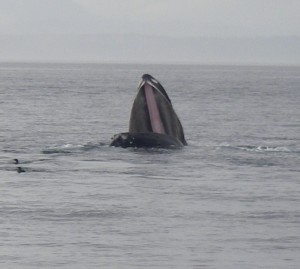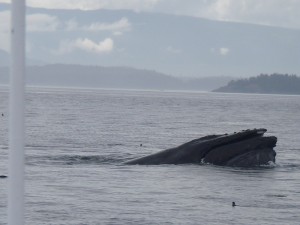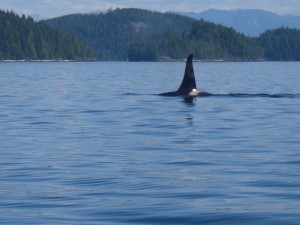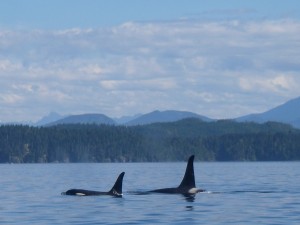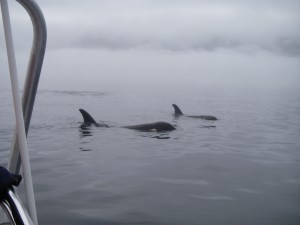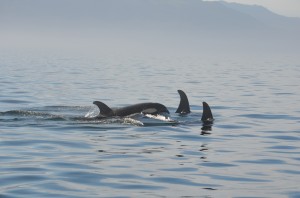
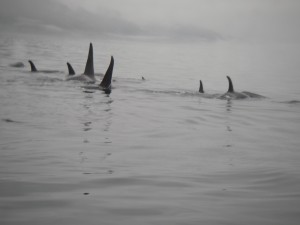
This was a normal “foggy” morning in August when we first found this pod of orca in Johnstone strait. The posting on February 17 will show the same orca in the sunshine later in the day. If you remember from my previous posting these photos were taken with a small waterproof Pentax (an optio, 6.0 megapixels with three times optical zoom) point and shoot so these orca came quite close. The first photo was when they appeared out of the fog and we shut off the motor and waited while they approached the boat. Again the guest photos are much better than mine are as I was also using the hydrophone to listen to their calls. If you check the December 26, 2013 posting you will see how close the orca came to the boat while they were listening to our hydrophone.
